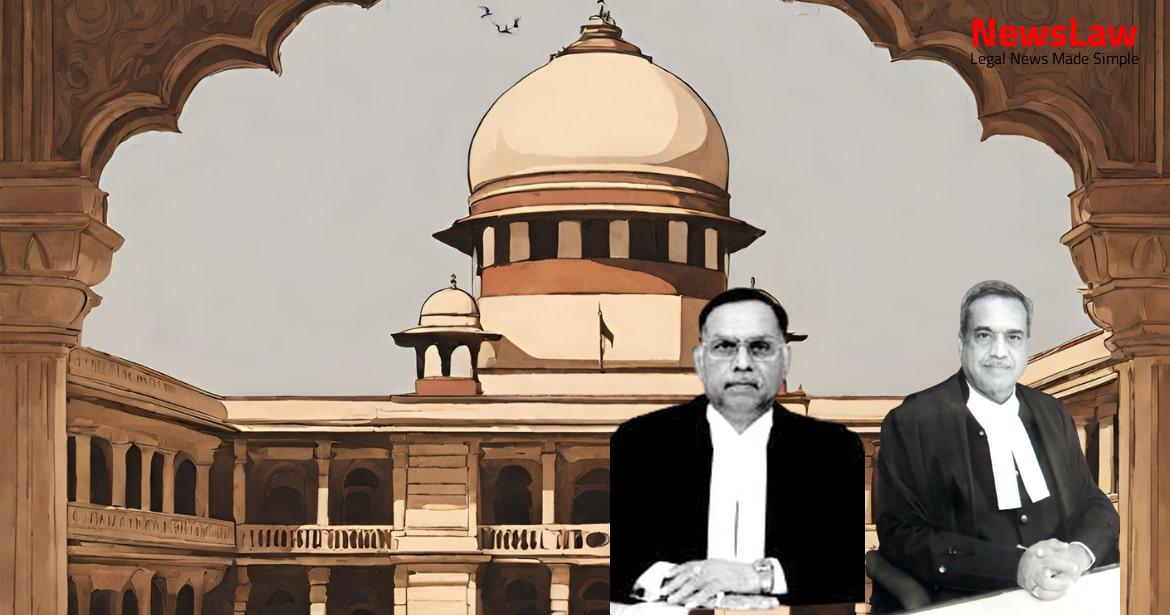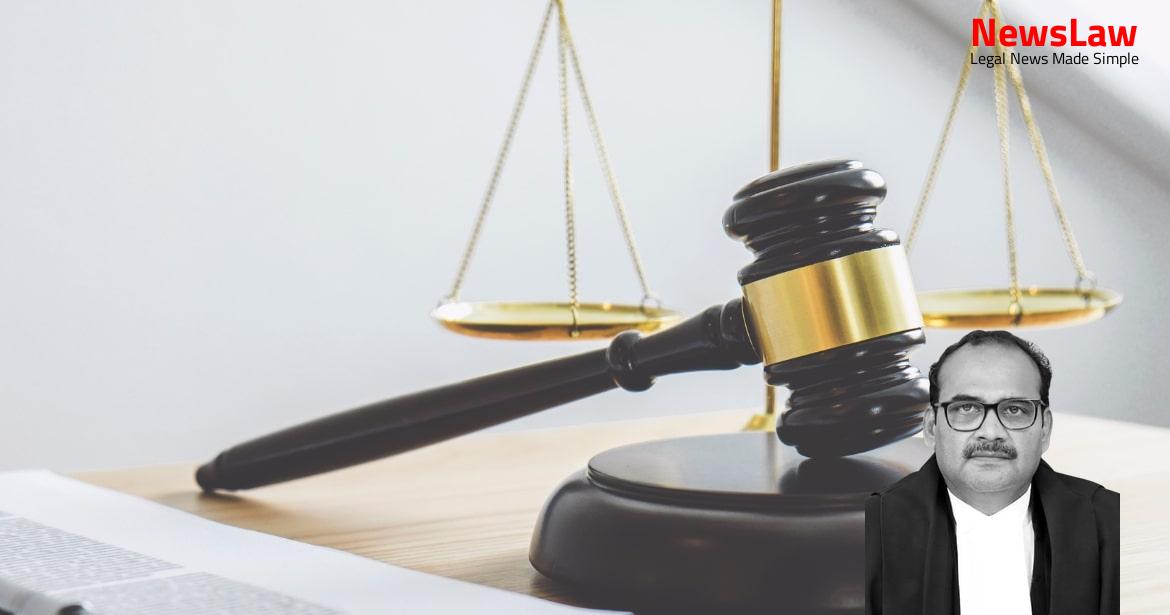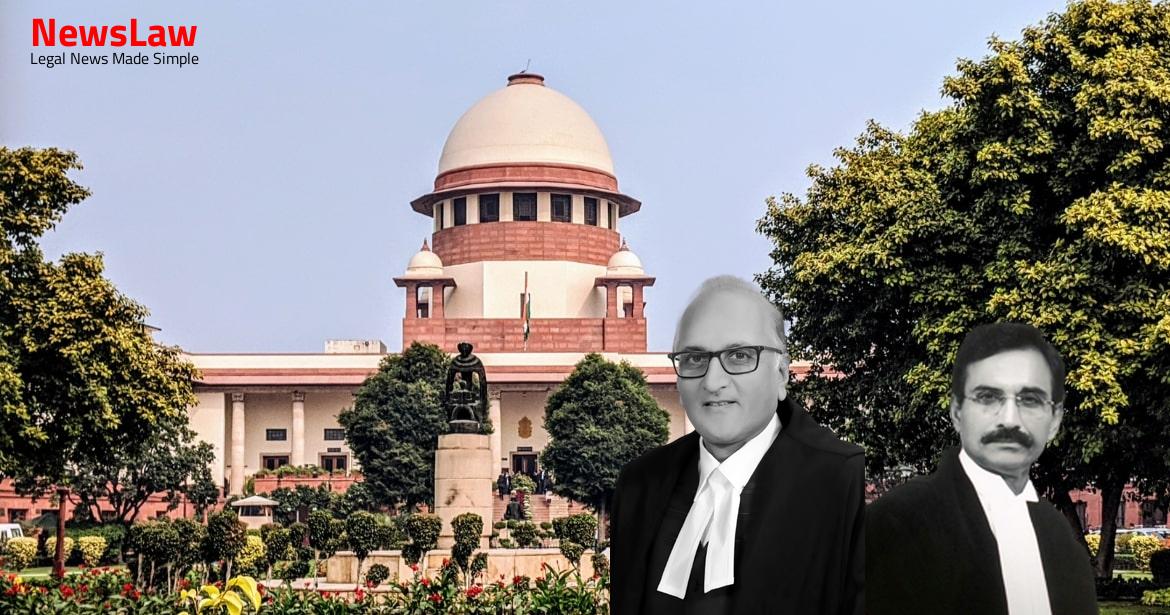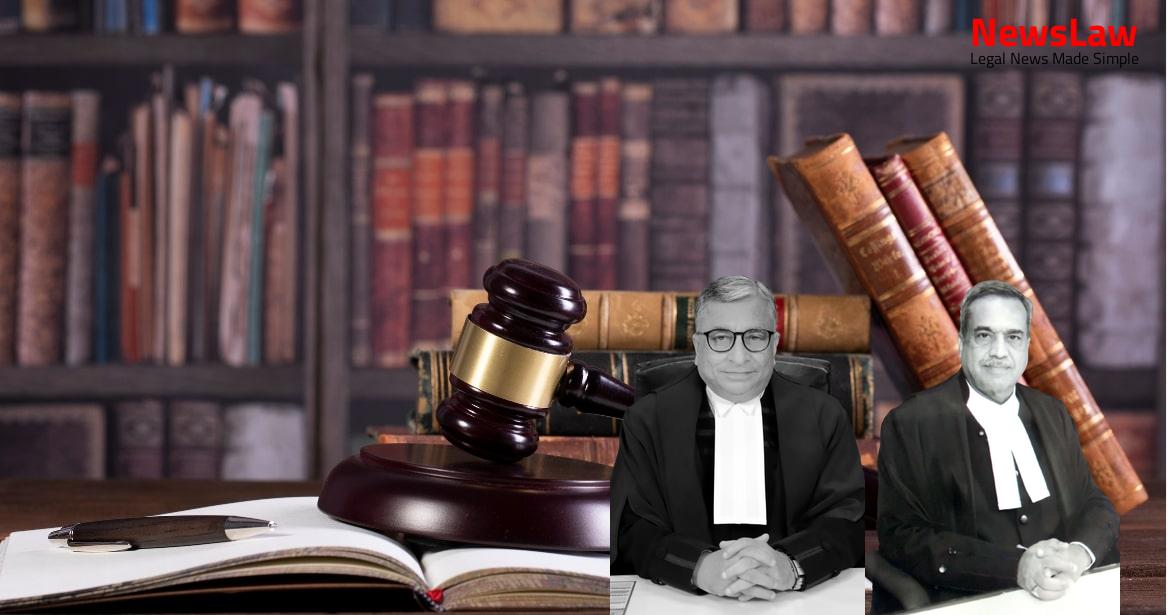Explore a detailed legal analysis of a case revolving around the identification of specific castes within Scheduled Tribes listings. The Court’s emphasis on official notifications and constitutional mandates in resolving caste-related disputes showcases the meticulous legislative process involved. Delve into the complexities of caste reclassifications and the exclusive authority of Parliament in modifying Scheduled Tribe listings. Discover the intricate legal framework underpinning social justice objectives in caste inclusion and exclusion matters.
Facts
- The issue pertains to the inclusion of
- Gond Govari
- tribe in the Constitution (Scheduled Tribes) Order, 1950 as amended by Scheduled Castes and Scheduled Tribes Orders (Amendment) Act, 1976 in Maharashtra.
- The Division Bench declared that the tribe Gond Gowari was extinct before 1911.
- They stated that there was no tribe as Gond Gowari as of 29-10-1956.
- Gowari community alone was shown as Gond Gowari in the Constitution (Scheduled Tribes) Order, 1950.
- The validity claim cannot be tested using the guidelines in the Government Resolution dated 24-4-1985.
- People belonging to Gowari community in Maharashtra cannot be denied Scheduled Tribes benefits even if shown in Special Backward Classes or Other Backward Class categories in certain Government Resolutions.
- The order invalidating the petitioner’s claim in Writ Petition No. 1742 of 2007 was quashed and remanded for fresh decision.
- The petitioner association, working for the welfare of Gowari community members, claimed that Gond Govari Scheduled Tribe was wrongly issued to respondents who belonged to Gowari community.
- The petition sought to quash caste validity certificates issued to respondent Nos. 4 to 19, alleging lack of proper enquiry before issuance.
Also Read: Improving Patient Care: Court’s Legal Analysis
Arguments
- The petitioners argued that the High Court erred in tinkering with the Entries under the Constitution (Scheduled Tribes) Order, 1950.
- They contended that such amendments could only be made through a Parliamentary Act as per Article 342 sub-clause (2) of the Constitution.
- It was argued that a detailed procedure must be followed to amend the Constitution (Scheduled Tribes) Order, 1950, which the High Court cannot do as done in the impugned judgment.
- The petitioners emphasized that it was within the High Court’s jurisdiction to ascertain the existence of the Tribe named ‘Gond Gowari’ and determine who are the true ‘Gond Gowari’ entitled to the benefits of Scheduled Tribes.
- The argument presented was that ‘Gond Gowari’ originated as a small hybrid caste resulting from an alliance of Gond and Gowari, and by 1911, ‘Gond Gowari’ were entirely assimilated into the Gowari Tribe.
- The petitioners asserted that there was no actual ‘Gond Gowari’ Tribe, and the Constitution (Scheduled Tribes) Order, 1950 actually included the tribe Gowari.
- It was stated that proving affinity with Gond was unnecessary for Gowari to be recognized as Scheduled Tribes, and even if the claim that Gond Gowari were extinct before 1911 was disputed, the High Court still had the duty to investigate the truth.
- The petitioners highlighted previous failed attempts by Gowari to obtain Scheduled Tribes status through Parliamentary action, leading them to seek a court declaration, which the law does not permit.
- The petitioners argued that the High Court delved into evidentiary matters to conclude that the Tribe ‘Gond Gowari’ had ceased to exist before 1911, an action that was beyond the scope of writ petitions.
- In light of the extinction of ‘Gond Gowari’ before 1911, it was asserted that it was Gowari who should be treated as Scheduled Tribes according to Entry 18 of the Constitution (Scheduled Tribes) Order, 1950.
- Reference was made to a Constitution Bench ruling indicating that Entries in the Constitution (Scheduled Tribes) Order, 1950 can only be modified by an Act of Parliament under Article 342(2), emphasizing that States, Courts, or other authorities cannot independently inquire into the inclusion of castes not explicitly mentioned in the order.
- Ultimately, it was concluded by the petitioners that ‘Gond Gowari’ as listed in Entry 18 of the Order exists distinctly from the caste ‘Gowari’ and that government recognitions of ‘Gowari’ as Special Backward Class and other Backward Class further substantiate their non-Scheduled Tribe status.
- Shri Rohatgi argues that Gowari community alone was shown as ‘Gond Gowari’ and there are no competitive claims of Gond Gowari due to its non-existence as of now.
- There is a conflict between the ratio of two Constitution Benches which needs to be referred to a larger Constitution Bench for resolution.
- The first Backward Classes Commission recommended Gowari under the ‘Gond’ group but a mistake led to Gond Gowari being included instead.
- The Chief Minister of Maharashtra recommended adding Gowari as a separate Tribe by deleting the entry of Gond Gowari.
- The State of Maharashtra took a stand for including Gowari as a separate entry in the Scheduled Tribes, creating a legitimate expectation in the Gowari community.
- Ms. Bansuri Swaraj, representing the respondents, asserts that the Gond Gowari community became extinct prior to the Census of 1911, referencing a book.
Also Read: Legal Analysis on Compensation and Protection for a Rape Victim
Analysis
- The judgement delves into the intricacies of caste inclusion and exclusion within the Scheduled Castes and Scheduled Tribes Orders, highlighting the importance of constitutional provisions for social justice.
- The case revolves around the identification of specific castes like ‘Voddar’ and ‘Gowari’ within the Scheduled Tribes list, necessitating a closer examination of historical and evidentiary factors.
- The Court makes a distinction between permissible and impermissible claims regarding caste affiliations, emphasizing the role of official notifications in determining Scheduled Tribe status.
- The complexities of caste reclassifications following state reorganization acts are also elucidated, showcasing the meticulous legislative process involved in updating Scheduled Castes and Scheduled Tribes Orders.
- The judgement considers precedents related to caste identification, particularly emphasizing the limitations on introducing new castes or sub-castes not originally listed in official orders.
- The legal framework under Article 341 and Article 342 of the Constitution is analyzed to underscore the exclusive authority of Parliament in modifying Scheduled Tribe listings.
- The Constitution’s provisions for area restrictions, census-based re-estimations, and adjustments in reserved constituencies based on caste demographics are explained in the context of social justice objectives.
- Ultimately, the Court focuses on the necessity of adhering to official notifications and constitutional mandates in resolving caste-related disputes, ensuring consistency and accuracy in Scheduled Tribe classifications.
- Article 342 of the Constitution deals with Scheduled Tribes.
- Scheduled Tribes are defined in Article 366(25) as tribes or tribal communities deemed under Article 342 to be Scheduled Tribes for the purposes of the Constitution.
- The President issued the Constitution (Scheduled Tribes) Order, 1950 on 06.09.1950.
- The Order specifies tribes or tribal communities deemed to be Scheduled Tribes in relation to specific States.
- Parliament has the power to include or exclude tribes or tribal communities from the list of Scheduled Tribes specified in a notification.
- Article 341(1) allows the President to specify castes, races, or tribes deemed to be Scheduled Castes for a State or Union Territory.
- Constitution Bench judgments in B. Basavalingappa’s case and Bhaiya Lal’s case referred to by the Court.
- In B. Basavalingappa v. D. Munichinnappa, the Court considered whether the respondent belonged to the scheduled caste mentioned in the Order.
- In Bhaiya Lal’s case, it was reiterated that modification in the Order by producing evidence to include other castes is not permissible.
- The law on the subject was explained and reiterated in other judgments of the Court.
- The observations and ratios of judgment from B. Basavalingappa’s case and Bhaiya Lal’s case were referred to in subsequent cases.
Also Read: Analysis of Seniority Determination in Armed Forces Personnel Case
Case Title: THE STATE OF MAHARASHTRA Vs. KESHAO VISHWANATH SONONE (2020 INSC 715)
Case Number: C.A. No.-004096-004096 / 2020



